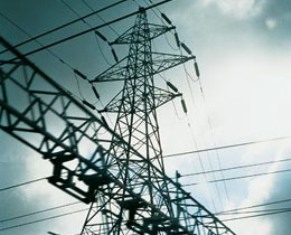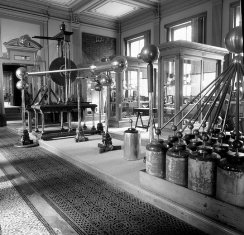Basic stages of the development of electrical engineering
Electrification has a decisive role in modern scientific and technological progress. As is known, electrification is understood as the widespread introduction of electrical energy into the home economy and everyday life, and today there is no such field of technology, in one form or another electric energy would not be used in the future, its application will be further expanded.
By electrical engineering in the broad sense of the word is meant the field of science and technology, using electrical and magnetic phenomena for practical purposes.
This general definition of electrical engineering can be expanded in more detail, highlighting those main areas in which electrical and magnetic phenomena are used: the transformation of the energy of nature (energy); Transformation of the substance of nature (technological); Reception and transmission of signals or information (informational). Therefore, my electrical engineering is more fully defined as a field of science and technology using electrical and magnetic phenomena for the realization of processes of energy conversion and transformation of matter, as well as for the transmission of signals and information.

In recent decades, electrical electronics has emerged from electrical engineering with its three areas: information, energy and technology, which every year become increasingly important in accelerating scientific and technological progress.
In the development of electrical engineering, the following six stages can be conventionally distinguished.
1. The formation of electrostatics (before 1800)
This period includes the first observations of electrical and magnetic phenomena, the creation of the first electrostatic machines and devices, the study of atmospheric electricity, the development of the first electricity theories, the establishment of the Coulomb law, the emergence of electromedicine.
2. Laying the foundation of electrical engineering, its scientific foundations {1800 - 1830's).
The beginning of this period was marked by the creation of a "voltaic column" - the first electrochemical generator, followed by "a huge battery" by VV Petrov, with which he received an electric arc and made many new discoveries. The most important achievements of this period are the discovery of the main properties of electric current, the laws of Ampere, Bio-Savart, Ohm, the creation of the prototype of the electric motor, the first indicator of the electric current (multiplier), the establishment of connections between electrical and magnetic phenomena.
3. The birth of electrical engineering (1830-1870 gg.)
The most significant event of this period was the discovery by M. Faraday of the phenomenon of electromagnetic induction, the creation of the first electromachine generator. Various designs of electrical machines and devices are being developed, the laws of Lenz and Kirchhoff are formulated, the first sources of electric lighting, the first electroautomatic devices are created, and electric measurement technology is born. However, the wide practical application of electrical energy was impossible due to the lack of an economical electric generator.
4. The formation of electrical engineering as an independent branch of technology (1870-1890 gg.)
The creation of the first conceived electromachine generator with self-excitation (dynamo) opens a new stage in the development of electrical engineering, which becomes an independent branch of technology.
In connection with the development of industry, the growth of cities there is an acute need for electric lighting, the construction of "house" electric power stations that produce direct current begins. Electric energy becomes a commodity, and the need for centralized production and economical transmission of electricity over considerable distances is increasingly felt. It was impossible to solve this problem on the basis of a direct current because of the impossibility of transforming a direct current.
A significant stimulus to the introduction of alternating current was the invention of PN Yablochkov's "electric candle" and the development of a scheme for crushing electric energy by means of induction coils, which were a transformer by an open magnetic system. However, single-phase motors were unsuitable for industrial electric drive purposes.
At the same time, methods are being developed for the transmission of electrical energy over long distances through a significant increase in the voltage of power lines.
The further development of electric lighting contributed to the improvement of electric machines and transformers; In the mid-80's. Serial production of single-phase transformers with a closed magnetic system (M. Deri, O. Blati, K. Tsipernovsky) began.
The idea of PN Yablochkov on the centralized production and distribution of electricity is put into practice, the construction of central AC electric power stations begins. However, developing production required a complex solution to the most complicated scientific and technical problem: the economical transmission of electricity over long distances and the creation of an economical and reliable electric motor that meets the requirements of an industrial electric drive. This problem was successfully solved on the basis of multiphase, in particular three-phase systems.

5. Formation and development of electrification (since 1891)
The most important prerequisite for the development of three-phase systems was the discovery (1888) of the phenomenon of a rotating magnetic field. The first multiphase motors were two-phase.
The three-phase system proved to be the most rational, since it had a number of advantages both over single-phase circuits and before other multiphase systems. In the development of three-phase systems, scientists and engineers from different countries made a big contribution. But as will be shown later, the greatest merit belongs to M.O. Dolivo-Dobrovolsky, who managed to give his work a practical character, which created three-phase synchronous generators and asynchronous motors, transformers.
A convincing illustration of the advantages of three-phase circuits was the famous Laufen-Frankfurt power transmission (1891), built with the active participation of Dolivo-Dobrovolsky.
From this time, rapid development of electrification begins: powerful power stations are being built, the voltage of electric transmissions increases, new designs of electric machines, apparatuses and devices are being developed. The electric motor occupies a dominant position in the industrial drive system. The electrification process gradually covers all new areas of production: developing electrometallurgy, electrothermy, electrochemistry. Electric energy is increasingly used in a wide variety of industries, transport, agriculture and everyday life.
Wide application of alternating current required theoretical comprehension and mathematical description of physical processes occurring in electric machines, power lines, transformers. The research of phenomena in AC circuits is expanded with the help of vector and circular diagrams.
An enormous progressive role in the analysis of processes in chains was played by the complex method proposed in 1893-1897. P. P. Steinmetz.
With the development of large power systems and increasing transmission distances, a serious scientific and technical problem arose in ensuring the stability of the parallel operation of power plant generators, which was solved by domestic and foreign scientists. Theoretical fundamentals of electrical engineering become the basis of educational disciplines in universities and the foundation of scientific research in the field of electrical engineering.

6. Origin and development of electronics (first quarter of XX century).
Growth in the demand for direct current (electrochemistry, electric transport, etc.) necessitated the development of converter technology, which led to the emergence and then rapid development of industrial electronics.
Electrical engineering becomes the basis for the development of automated control systems for power and production processes. The creation of a variety of electronic, especially microelectronic devices, makes it possible to radically improve the efficiency of automation of computing processes, information processing, simulation of complex physical phenomena, the solution of logical problems, etc. with a significant reduction in dimensions, devices, increasing their reliability and economy.
Significant progress in electronics was observed after the creation of large integrated circuits (LSIs), their speed is measured in billions of seconds, and the minimum dimensions are 2-3 microns. The introduction of BIS led to the creation of microprocessors that digitally process information on the program, and microcomputers.
The rapid development of microelectronics has caused the emergence and notable progress of a new field of science and technology - computer science. Already in the early 80's. Both in our country and abroad, began to manufacture microprocessors and microcomputers in a single crystal. All this gives a huge effect in increasing reliability, reducing the size and power consumption of microelectronic devices used in various production processes, automated control systems, in transport, in household devices.


Comments
When commenting on, remember that the content and tone of your message can hurt the feelings of real people, show respect and tolerance to your interlocutors even if you do not share their opinion, your behavior in the conditions of freedom of expression and anonymity provided by the Internet, changes Not only virtual, but also the real world. All comments are hidden from the index, spam is controlled.